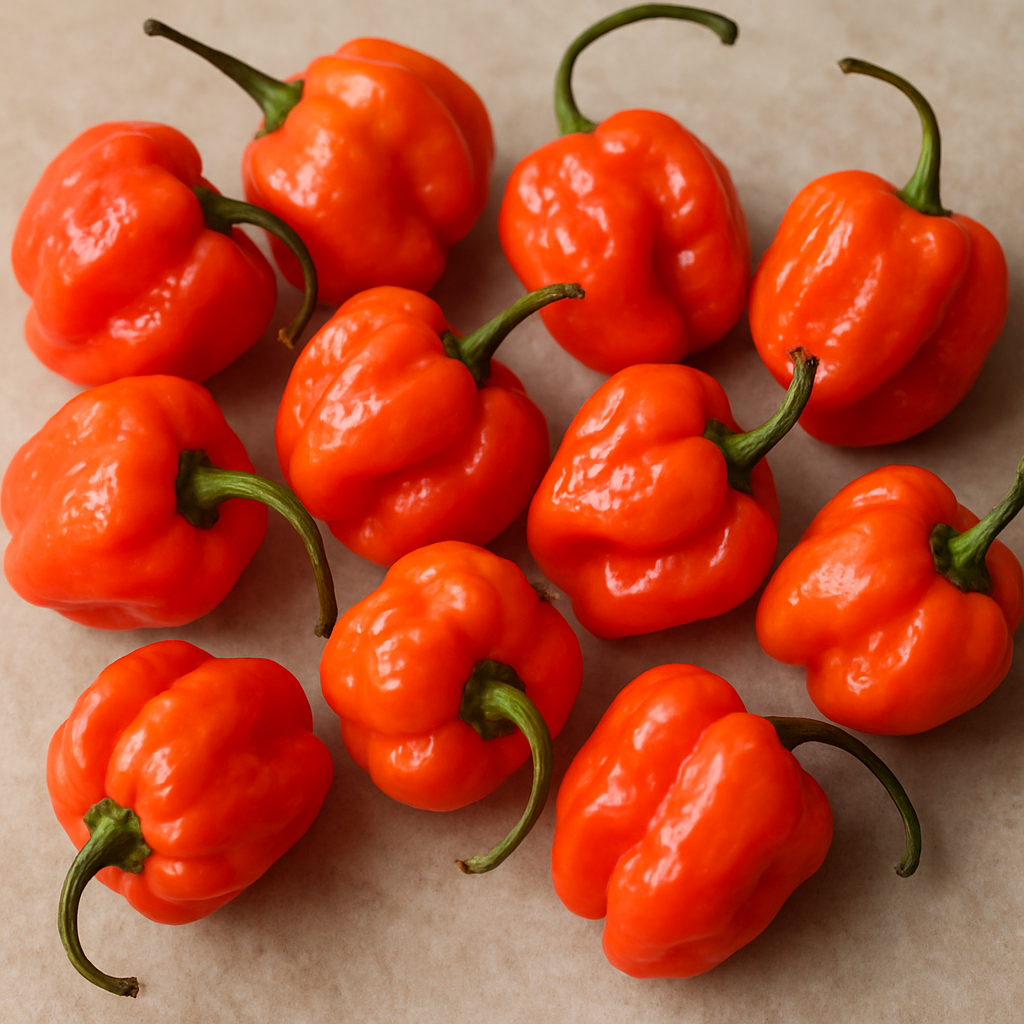Scotch is more than just a drink; it's a cultural experience deeply rooted in tradition and history. Whether you're interested in scotch whisky or the spicy scotch bonnet pepper, there's much to appreciate. In this guide, we'll explore the essentials of scotch, helping you navigate the world of this beloved spirit and culinary delight.

Scotch Whisky
Scotch whisky, often simply called scotch, is a malt or grain whisky made in Scotland. Known for its distinct flavors and aromas, scotch whisky is a favorite among enthusiasts worldwide. Its unique character comes from specific production techniques and the Scottish climate. The history of scotch whisky dates back centuries, with its origins shrouded in mystery and legend. Over the years, it has evolved into a symbol of Scottish heritage and craftsmanship.
Scotch whisky is not just a drink; it's a journey through the landscapes of Scotland. Each region imparts its own character to the whisky, from the peatiness of Islay to the floral notes of Speyside. This diversity makes exploring scotch a thrilling adventure for the senses. Enthusiasts often embark on whisky tours, visiting distilleries to experience firsthand the passion and dedication that goes into every bottle.
The Production Process
Scotch whisky production is an art form. It begins with malting barley, which is then mashed and fermented. The fermented liquid is distilled twice in copper pot stills, creating a potent spirit. This spirit is aged in oak barrels for a minimum of three years, though many scotches are aged much longer, resulting in a rich and complex flavor profile. Each stage of production is crucial, with skilled craftsmen overseeing every detail to ensure quality.
The choice of casks plays a significant role in shaping the whisky's flavor. Oak casks, often previously used for sherry, bourbon, or wine, impart unique characteristics to the spirit. The aging process allows the whisky to develop depth and complexity, with flavors of vanilla, spice, and fruit emerging over time. Master blenders meticulously select and combine different casks to create consistent and harmonious expressions.
The Scottish climate also influences the maturation process. The cool, damp conditions allow the whisky to mature slowly, resulting in a smooth and refined product. This natural environment, combined with traditional methods, contributes to the unparalleled quality of scotch whisky. Each bottle tells a story of time, patience, and the timeless beauty of the Scottish landscape.
Scotch Bonnet Peppers

Scotch bonnet peppers are named for their resemblance to a traditional Scottish bonnet, though their origins are firmly rooted in the Caribbean. They are a staple in many regional dishes, providing both heat and depth of flavor. Chefs and home cooks alike appreciate their versatility, using them to create marinades, sauces, and salsas that elevate everyday meals to extraordinary culinary experiences.
In addition to their culinary uses, scotch bonnet peppers are celebrated for their health benefits. Rich in vitamins A and C, they can boost the immune system and promote overall well-being. The capsaicin in these peppers is known for its anti-inflammatory properties, making them a popular choice for those seeking natural remedies. Embracing the heat of scotch bonnet peppers can be a delicious way to spice up your life while reaping numerous health advantages.
Types of Scotch Whisky
Scotch whisky is categorized into five main types, each offering a distinct taste and experience.
Single Malt Scotch
Single malt scotch is made from malted barley at a single distillery. It is known for its rich and complex flavors, often influenced by the region where it is produced. Regions like Islay, Speyside, and the Highlands are famous for their unique single malts. The allure of single malt scotch lies in its authenticity and purity, capturing the essence of the land and the craft of its makers.
Each region imparts its own character to the whisky, from the peaty, smoky notes of Islay to the sweet, fruity flavors of Speyside. The Highlands offer a diverse range of expressions, from light and floral to rich and robust. This variety allows whisky lovers to explore and discover their personal preferences, with each bottle offering a new and exciting experience.
Single malt scotch is often enjoyed neat or with a splash of water, allowing its complex flavors to shine. Connoisseurs appreciate the craftsmanship and artistry that go into every bottle, making it a cherished addition to any whisky collection. Whether you're a seasoned enthusiast or a curious newcomer, single malt scotch offers a journey of discovery and delight.
Single Grain Scotch
Single grain scotch is produced at a single distillery but can include grains other than barley. It is typically lighter and less complex than single malt, often used in blends. Despite being less well-known, single grain scotch has its own unique appeal, offering a smooth and approachable drinking experience.
Single grain scotch is often produced using continuous column stills, which allows for a more efficient distillation process. This results in a lighter spirit with a subtle, delicate flavor profile. While it may not have the same depth as single malt, single grain scotch is appreciated for its versatility and ease of enjoyment.
In recent years, single grain scotch has gained popularity as distillers experiment with new expressions and finishes. By aging the whisky in different types of casks, producers can create innovative and exciting flavors. This exploration of single grain scotch has led to a renewed interest in this often-overlooked category, making it an intriguing option for whisky enthusiasts seeking something different.
Blended Malt Scotch
Blended malt scotch is a mix of single malts from different distilleries. This blend creates a balanced flavor profile, offering the best of multiple single malts in one bottle. The art of blending is a skillful process, requiring a keen palate and an understanding of how different whiskies interact to create harmony.
Master blenders carefully select and combine whiskies from various regions, balancing their distinct characteristics to achieve a cohesive and pleasing result. This allows for a more consistent and accessible product, appealing to a wide audience of whisky drinkers. Blended malt scotch provides an excellent introduction to the world of whisky, offering complexity and depth without overwhelming the senses.
For those who appreciate variety, blended malt scotch offers endless possibilities. Each blend is a unique creation, reflecting the vision and expertise of its maker. Whether enjoyed neat, on the rocks, or in a cocktail, blended malt scotch is a versatile and enjoyable option for any occasion.
Blended Grain Scotch
Blended grain scotch combines grain whiskies from different distilleries. It's less common than other types but offers a unique taste experience. The blending of grain whiskies allows for creative expression, resulting in smooth, light, and often innovative flavors.
Blended grain scotch is often used as a base for blended whiskies, but it can also stand on its own as a distinct category. The combination of different grains and distillation methods allows for a diverse range of flavors, from sweet and creamy to crisp and clean. This versatility makes blended grain scotch an exciting option for those looking to explore new and unconventional whisky experiences.
Despite being less mainstream, blended grain scotch is gaining recognition among whisky aficionados and adventurous drinkers. Its approachable flavor profile and unique character make it a delightful choice for those seeking something beyond the traditional whisky categories. Embrace the unexpected and discover the charm of blended grain scotch.
Blended Scotch Whisky
Blended scotch is the most popular type, combining both malt and grain whiskies. It offers a smooth and approachable taste, perfect for those new to scotch. The art of blending allows for consistency and balance, making blended scotch a reliable and enjoyable choice for any occasion.
Blended scotch whisky is often crafted to highlight specific flavors, whether it's the sweetness of grain whisky or the richness of malt. This balance makes it an ideal choice for cocktails and mixed drinks, as well as a satisfying sip on its own. The versatility of blended scotch has made it a staple in bars and homes around the world.
For those new to whisky, blended scotch provides an accessible entry point, offering a taste of the complexity and richness of the spirit without overwhelming the palate. Its widespread appeal and consistent quality have made it a beloved classic, enjoyed by whisky novices and connoisseurs alike. Embrace the timeless allure of blended scotch and enjoy its smooth, satisfying taste.
How to Taste Scotch Whisky

Tasting scotch whisky is an art that involves more than just sipping. Here's how to properly enjoy this classic spirit.
Observe the Color
Pour the scotch into a glass and hold it up to the light. The color can range from pale gold to deep amber, influenced by the aging process and type of cask used. The color of the whisky offers a visual clue to its age and potential flavor profile, inviting you to explore further.
The color of scotch whisky is often a result of its interaction with the cask during maturation. Sherry casks, for example, can impart a rich, amber hue, while bourbon casks may produce a lighter, golden color. Observing the color is the first step in the tasting journey, setting the stage for the sensory experience to come.
A deeper color may suggest a more robust flavor, while a lighter hue might indicate a fresher, more delicate taste. However, color is not always an indicator of quality, as some whiskies are naturally light yet complex. Take a moment to appreciate the visual allure of the whisky, as it reflects the craftsmanship and care that went into its creation.
Smell the Aroma
Swirl the glass gently to release the aromas. Take a moment to inhale the scents, which can include notes of honey, fruit, smoke, or spices. The aroma is an essential part of the tasting experience, offering a preview of the flavors that await.
The nose of a whisky can be complex, with layers of scents unfolding as you explore. From floral and fruity to earthy and smoky, each whisky offers a unique aromatic profile. The interaction between the spirit and the cask, along with the distillation process, contributes to the diverse range of aromas found in scotch whisky.
To fully appreciate the aroma, take your time and breathe deeply, allowing the scents to envelop your senses. This olfactory exploration enhances your understanding of the whisky and prepares your palate for the tasting experience. Savoring the aroma is a crucial step in unlocking the full potential of scotch whisky.
Taste the Flavor
Take a small sip and let it linger on your palate. Notice the initial flavors and how they evolve. You might detect sweetness, spiciness, or smokiness, depending on the type of scotch. The complexity of the flavor is where the true artistry of scotch whisky shines.
As the whisky coats your palate, pay attention to the different taste sensations. The sweetness of malt, the warmth of spice, the depth of smoke, and the subtlety of fruit can all be present in a single sip. The balance and interplay of these flavors are what make scotch whisky a captivating and rewarding experience.
Take your time to appreciate how the flavors develop and change, revealing new layers and nuances. Allow the whisky to speak to you, guiding you through its intricate and harmonious composition. This mindful tasting approach enhances your appreciation and enjoyment of scotch whisky.
Savor the Finish
The finish is the lingering taste after swallowing. A good scotch will have a long and pleasant finish, leaving you with a lasting impression. The finish is the culmination of the tasting experience, offering a final note of satisfaction.
The length and character of the finish can vary, from short and crisp to long and warming. A well-crafted scotch will leave a memorable impression, with flavors that linger and evolve even after the last sip. The finish is a testament to the quality and craftsmanship of the whisky, providing a sense of closure to the tasting journey.
Take a moment to reflect on the experience, savoring the lingering flavors and sensations. The finish is an opportunity to appreciate the depth and complexity of the whisky, as well as the skill and artistry that went into its creation. Embrace the finish as the final chapter in the story of your scotch whisky journey.
Cooking with Scotch Bonnet Peppers
Scotch bonnet peppers aren't just for those who love heat; they can enhance the flavor of many dishes.
Using Scotch Bonnet Peppers
When cooking with scotch bonnet peppers, remember that a little goes a long way. Their heat level can be intense, so use them sparingly. They pair well with tropical fruits, meats, and seafood, adding a distinctive kick to recipes. Balancing their heat with other flavors is key to creating harmonious and delicious dishes.
Scotch bonnet peppers can be used in a variety of ways, from fresh to dried, whole to chopped. Incorporating them into marinades, sauces, and salsas adds depth and complexity, elevating simple ingredients to extraordinary culinary delights. The vibrant, fruity flavor of scotch bonnet peppers complements a wide range of dishes, enhancing their overall appeal.
When handling scotch bonnet peppers, take care to protect yourself from their intense heat. Wearing gloves and avoiding contact with your eyes can prevent discomfort. Embrace the boldness of scotch bonnet peppers, and let their fiery character inspire your culinary creations.
Popular Dishes
- Jerk Chicken: A Caribbean classic, jerk chicken features a spicy marinade with scotch bonnet peppers, allspice, and thyme. The combination of heat and aromatic spices creates a mouthwatering dish that is both flavorful and satisfying. The charred, smoky flavors from grilling further enhance the complexity of jerk chicken, making it a beloved favorite.
- Pepper Sauce: A hot sauce made with scotch bonnet peppers, perfect for adding heat to any dish. The vibrant color and fiery kick of pepper sauce make it a versatile condiment, ideal for spicing up everything from eggs to seafood. Customizing the ingredients allows for a personalized touch, creating a sauce that reflects your taste preferences.
- Curries: Incorporate scotch bonnet peppers into curries for a spicy and aromatic experience. The heat and fruity notes of the peppers complement the rich, flavorful spices of curry, creating a harmonious blend that excites the palate. From Caribbean to Indian-inspired curries, scotch bonnet peppers add a unique twist to traditional recipes.
Health Benefits
Scotch bonnet peppers aren't just a culinary delight; they also offer numerous health benefits. Rich in vitamins and antioxidants, they can boost the immune system and promote overall well-being. The capsaicin in these peppers is known for its anti-inflammatory and pain-relieving properties, making them a popular choice for natural remedies.
Including scotch bonnet peppers in your diet can support cardiovascular health by improving circulation and reducing cholesterol levels. Their vibrant color indicates a high concentration of beneficial nutrients, contributing to a healthy lifestyle. Embrace the health benefits of scotch bonnet peppers and incorporate them into your meals for a flavorful and nutritious boost.
Pairing Scotch Whisky and Food
Pairing scotch whisky with food can enhance both the drink and the meal. Here are some tips for successful pairings.
Cheese
Rich and creamy cheeses like blue cheese or aged cheddar pair well with the complexity of scotch whisky. The bold flavors of the cheese complement the whisky's depth, creating a harmonious and indulgent experience. Experimenting with different cheeses allows for a range of pairings, each offering a unique taste sensation.
The saltiness of cheese can balance the sweetness of certain scotches, while the creaminess enhances the whisky's smoothness. Aged cheeses, with their robust flavors and textures, provide an exciting contrast to the whisky's character. Whether enjoyed as a casual snack or a sophisticated tasting experience, pairing cheese with scotch whisky is a delightful exploration of flavors.
Chocolate
Dark chocolate complements the flavors in scotch, especially those with notes of fruit or spice. The bitterness of dark chocolate enhances the whisky's sweetness, creating a balanced and satisfying pairing. The rich, velvety texture of chocolate adds a luxurious element to the tasting experience.
Pairing chocolate with scotch whisky can highlight the subtle complexities of both, revealing new and unexpected flavors. The combination of cocoa and whisky can evoke notes of fruit, nuts, or spices, enhancing the overall enjoyment. Whether as a dessert or a treat, chocolate and scotch whisky create a decadent and memorable pairing.
Smoked Meats
The smoky flavor of certain scotches pairs beautifully with smoked meats like salmon or BBQ ribs. The rich, savory notes of smoked meats enhance the whisky's peaty character, creating a robust and satisfying combination. This pairing is perfect for those who appreciate bold flavors and hearty dishes.
The complexity of scotch whisky can complement the various spices and marinades used in smoked meats, adding depth and dimension to the meal. Whether enjoyed at a casual barbecue or a gourmet dinner, pairing smoked meats with scotch whisky offers a flavorful and indulgent experience. Embrace the richness of smoked flavors and discover the magic of this delicious pairing.
Conclusion
Whether you're sipping a smooth single malt or spicing up a dish with scotch bonnet peppers, the world of scotch offers a rich and diverse experience. Understanding the different types of scotch whisky and how to enjoy them can enhance your appreciation for this classic drink. Meanwhile, experimenting with scotch bonnet peppers in your cooking can bring exciting new flavors to your meals. Embrace the art of scotch and discover your favorite expressions today.
The art of scotch is a celebration of tradition, craftsmanship, and flavor, offering endless opportunities for exploration and enjoyment. Whether you are a seasoned enthusiast or a curious newcomer, the world of scotch invites you to indulge your senses and expand your culinary horizons. Let the journey begin, and may you find joy and inspiration in the diverse and delightful world of scotch. Cheers to new experiences and the timeless allure of scotch whisky and scotch bonnet peppers!


